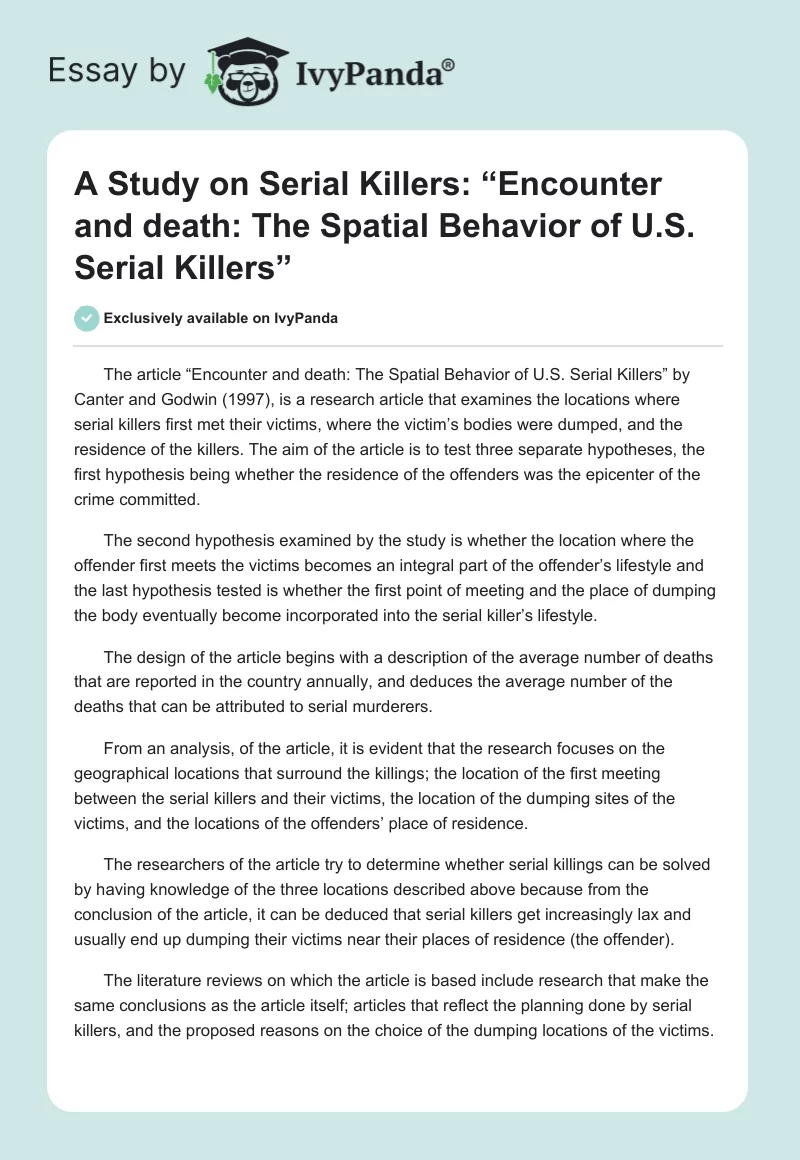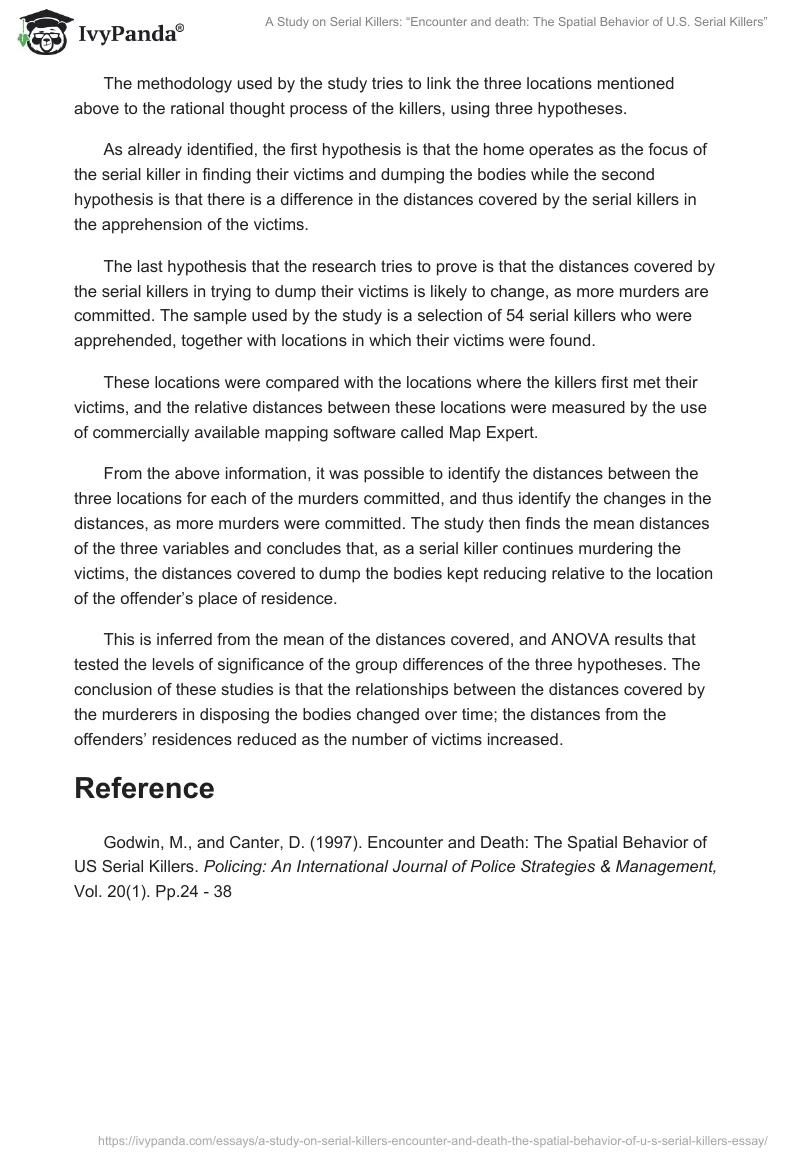The article “Encounter and death: The Spatial Behavior of U.S. Serial Killers” by Canter and Godwin (1997), is a research article that examines the locations where serial killers first met their victims, where the victim’s bodies were dumped, and the residence of the killers. The aim of the article is to test three separate hypotheses, the first hypothesis being whether the residence of the offenders was the epicenter of the crime committed.
The second hypothesis examined by the study is whether the location where the offender first meets the victims becomes an integral part of the offender’s lifestyle and the last hypothesis tested is whether the first point of meeting and the place of dumping the body eventually become incorporated into the serial killer’s lifestyle.
The design of the article begins with a description of the average number of deaths that are reported in the country annually, and deduces the average number of the deaths that can be attributed to serial murderers.
From an analysis, of the article, it is evident that the research focuses on the geographical locations that surround the killings; the location of the first meeting between the serial killers and their victims, the location of the dumping sites of the victims, and the locations of the offenders’ place of residence.
The researchers of the article try to determine whether serial killings can be solved by having knowledge of the three locations described above because from the conclusion of the article, it can be deduced that serial killers get increasingly lax and usually end up dumping their victims near their places of residence (the offender).
The literature reviews on which the article is based include research that make the same conclusions as the article itself; articles that reflect the planning done by serial killers, and the proposed reasons on the choice of the dumping locations of the victims.
The methodology used by the study tries to link the three locations mentioned above to the rational thought process of the killers, using three hypotheses.
As already identified, the first hypothesis is that the home operates as the focus of the serial killer in finding their victims and dumping the bodies while the second hypothesis is that there is a difference in the distances covered by the serial killers in the apprehension of the victims.
The last hypothesis that the research tries to prove is that the distances covered by the serial killers in trying to dump their victims is likely to change, as more murders are committed. The sample used by the study is a selection of 54 serial killers who were apprehended, together with locations in which their victims were found.
These locations were compared with the locations where the killers first met their victims, and the relative distances between these locations were measured by the use of commercially available mapping software called Map Expert.
From the above information, it was possible to identify the distances between the three locations for each of the murders committed, and thus identify the changes in the distances, as more murders were committed. The study then finds the mean distances of the three variables and concludes that, as a serial killer continues murdering the victims, the distances covered to dump the bodies kept reducing relative to the location of the offender’s place of residence.
This is inferred from the mean of the distances covered, and ANOVA results that tested the levels of significance of the group differences of the three hypotheses. The conclusion of these studies is that the relationships between the distances covered by the murderers in disposing the bodies changed over time; the distances from the offenders’ residences reduced as the number of victims increased.
Reference
Godwin, M., and Canter, D. (1997). Encounter and Death: The Spatial Behavior of US Serial Killers. Policing: An International Journal of Police Strategies & Management, Vol. 20(1). Pp.24 – 38


